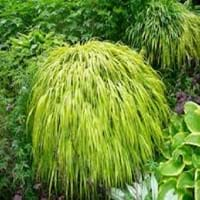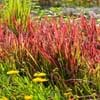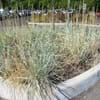Life Span
Perennial
Perennial
Type
Grass
Bulb or Corm or Tuber
Origin
Japan
Hybrid origin
Types
Not Available
boissieri , cupanii , hungaricum , kesselringii
Number of Varieties
Not Available
Habitat
meadows, Riverbanks, Wet Woods
Temperate Regions
USDA Hardiness Zone
5-9
Not Available
AHS Heat Zone
9 - 5
Not Available
Sunset Zone
1a, 1b, 2a, 2b, 3a, 3b, 4, 5, 6, 7, 8, 9, 10, 11, 12, 13, 14, 15, 16, 17, 18, 19, 20, 21, 22, 23, 24
21,22
Habit
Clump-Forming
Clump-Forming
Flower Color
Blue Violet
Purple, Violet
Flower Color Modifier
Bicolor
Bicolor
Fruit Color
Purple
Not Available
Leaf Color in Spring
Yellow, Green, Light Green
Green
Leaf Color in Summer
Light Green
Light Green
Leaf Color in Fall
Orange, Yellow green, Orange Red
Several shades of Green
Leaf Color in Winter
Green, Dark Green, Not Available
Light Green
Leaf Shape
Oblovate
Long Linear
Plant Season
Spring, Summer, Fall
Spring, Fall
Sunlight
Full Sun, Partial Sun, Partial shade
Full Sun, Partial Sun
The pH of Soil
Acidic, Neutral
Acidic, Neutral
Soil Drainage
Well drained
Well drained
Bloom Time
Late Summer, Early Fall, Fall
Late Summer, Early Fall
Tolerances
Dry soil, Shallow soil
Drought
Where to Plant?
Ground
Ground
How to Plant?
From Rhizomes
Divison, From bulbs, Seedlings
Plant Maintenance
Medium
Medium
Watering Requirements
Keep ground moist
Keep ground moist
In Summer
Lots of watering
Lots of watering
In Spring
Consistently
Moderate
In Winter
Adequately
Average Water
Soil pH
Acidic, Neutral
Acidic, Neutral
Soil Drainage Capacity
Well drained
Well drained
Sun Exposure
Full Sun, Partial Sun, Partial shade
Full Sun, Partial Sun
Pruning
Prune grass to maintain level, Prune if you want to improve plant shape
no pruning required
Fertilizers
organic fertlizers
All-Purpose Liquid Fertilizer
Pests and Diseases
Not Available
Dry root rot, Pest Free
Plant Tolerance
Shade areas, Shallow soil, Wet Site
Drought
Flowers
Insignificant
Showy
Flower Petal Number
Single
Single
Foliage Texture
Medium
Coarse
Foliage Sheen
Matte
Glossy
Attracts
Ants, Beetles, Caterpillar
Whiteflies
Allergy
allergic conjunctivitis, Asthma, Rash
Poisonous to grazing animals
Aesthetic Uses
Beautification, Ground Cover
along a porch, deck or patio, Borders, Mixed Border, small hedge
Beauty Benefits
Not Available
No Beauty Benefits
Environmental Uses
Provides ground cover, Shadow Tree
Air purification
Medicinal Uses
Acne, Aging, Laxative
anti rheumatic, cathartic
Part of Plant Used
Leaves
Root
Other Uses
Can be made into a herbal tea, Showy Purposes
Showy Purposes
Used As Indoor Plant
Sometimes
No
Used As Outdoor Plant
Yes
Yes
Garden Design
Container, Edging, Mixed Border, Rock Garden / Wall, Water Gardens
Container, Cutflower, Foundation, Lawns and Turf, Mixed Border
Botanical Name
HAKONECHLOA macra 'Aureola'
COLCHICUM 'Lilac Wonder'
Common Name
Golden Japanese Forest Grass, Hakone Grass
Hybrid Autumn Crocus, Hybrid Meadow Saffron
In Hindi
जापानी वन घास
meadow saffron
In German
Japanische gras
Herbstzeitlose
In French
Forêt herbe japonaise
Colchique d'automne
In Spanish
forestales hierba japonesa
Estado de conservación
In Greek
Ιαπωνικά γρασίδι δάσος
meadow saffron
In Portuguese
floresta grama japonês
Colchicum autumnale
In Polish
Japoński las lato
Colchicum autumnale
In Latin
Forest gramina Italica
autumnale
Phylum
Angiosperms
Tracheophyta
Class
Monocots
Magnoliopsida
Genus
Hachanechloa
Colchicum
Clade
Angiosperms
Angiosperms, Monocots
Tribe
Not Available
Not Available
Subfamily
Arundinariinae
Not Available
Number of Species
Not Available
Not Available
Properties of Japanese Forest Grass and Meadow Saffron
Wondering what are the properties of Japanese Forest Grass and Meadow Saffron? We provide you with everything About Japanese Forest Grass and Meadow Saffron. Japanese Forest Grass doesn't have thorns and Meadow Saffron doesn't have thorns. Also Japanese Forest Grass does not have fragrant flowers. Japanese Forest Grass has allergic reactions like allergic conjunctivitis, Asthma and Rash and Meadow Saffron has allergic reactions like allergic conjunctivitis, Asthma and Rash. Compare all the properties and characteristics of these two plants. Find out which of these plant can be used as indoor plant. If you are interested to decorate your house and garden, find out aesthetic uses, compare them and select the plant which will beautify your surrounding. Along with beautification, try comparing medicinal and edible uses of Japanese Forest Grass and Meadow Saffron and you can choose the plant having best and most benefits.
Season and Care of Japanese Forest Grass and Meadow Saffron
Season and care of Japanese Forest Grass and Meadow Saffron is important to know. While considering everything about Japanese Forest Grass and Meadow Saffron Care, growing season is an essential factor. Japanese Forest Grass season is Spring, Summer and Fall and Meadow Saffron season is Spring, Summer and Fall. The type of soil for Japanese Forest Grass is Loam and for Meadow Saffron is Loam while the PH of soil for Japanese Forest Grass is Acidic, Neutral and for Meadow Saffron is Acidic, Neutral.
Japanese Forest Grass and Meadow Saffron Physical Information
Japanese Forest Grass and Meadow Saffron physical information is very important for comparison. Japanese Forest Grass height is 30.50 cm and width 30.50 cm whereas Meadow Saffron height is 12.70 cm and width 20.30 cm. The color specification of Japanese Forest Grass and Meadow Saffron are as follows:
Japanese Forest Grass flower color: Blue Violet
Japanese Forest Grass leaf color: Yellow, Green and Light Green
Meadow Saffron flower color: Purple and Violet
- Meadow Saffron leaf color: Green
Care of Japanese Forest Grass and Meadow Saffron
Care of Japanese Forest Grass and Meadow Saffron include pruning, fertilizers, watering etc. Japanese Forest Grass pruning is done Prune grass to maintain level and Prune if you want to improve plant shape and Meadow Saffron pruning is done no pruning required. In summer Japanese Forest Grass needs Lots of watering and in winter, it needs Adequately. Whereas, in summer Meadow Saffron needs Lots of watering and in winter, it needs Average Water.





